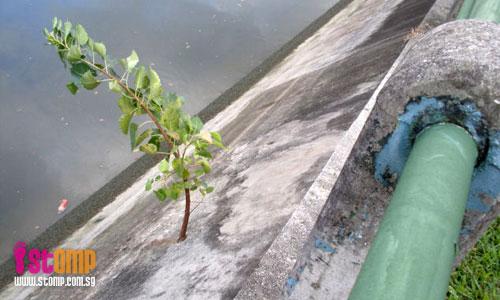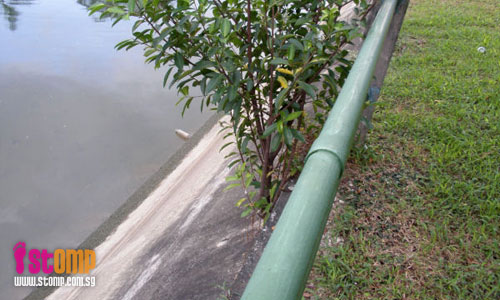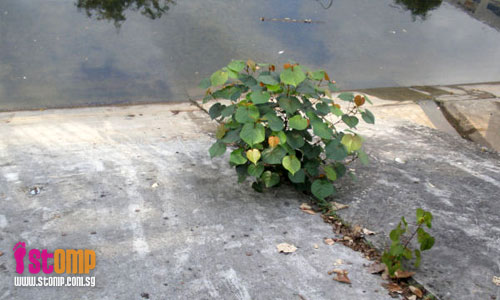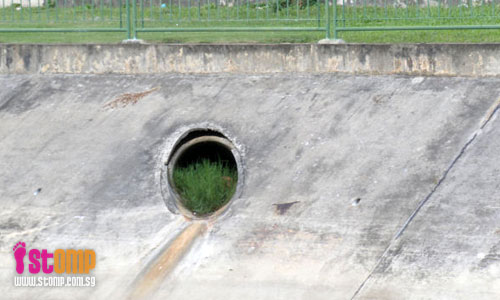
STOMPer Jogger is concerned that these walls may be eventually cracked by the roots of the plants growing on them. These pictures are taken at the bank of the Sungei Sembawang between Woodlands Ave 7 and Admiralty Road West.
In his email:
"The fig tree is growing on the concrete wall of the river bank. This tree has powerful roots and one day it may crack the concrete wall.


"The tree known as Ficus religiosa can grow to a height of 20m and its powerful roots will one day crack the wall of the river bank.

"This weep hole is covered with grass and this impedes drainage of water.
"Retaining walls are usually designed to drain away water that accumulates behind the wall. Otherwise, the pressure behind the wall may cause it to collapse. The weep holes should be kept clear of grass and plants so that the water can drain properly.
"It is best to remove the young plants before they cause extensive damage. I hope NEA and NParks will look into this problem."
Related posts: Complaint about danger tree on June 3, action taken to remove it on June 3 (4th June 2009)
Long tree roots may damage overhead bridge (2nd June 2009)
"Tree roots may cause this Spottiswoode Park shophouse to collapse" (6th April 2009)
Powerful tree roots damage Bukit Batok drain (9th March 2009)
Danger: Growing tree roots can crack wall of river bank (8th March 2009)
Tree growing on old shophouse may cause pillars to give way (2nd February 2009)
This tree has claimed a bridge of its own (30th January 2009)
The plant in the 3rd photo looks more like the sea hibiscus (Talipariti tiliaceum).
Personally, I prefer natural-looking river channels, instead of the ugly sterile concrete canals so prevalent throughout Singapore. As part of the ABC Waters Programme, perhaps some allowance should be provided for certain stretches of our rivers to return to a more natural state, which would not only be a great improvement from an aesthetic point of view, but also allow aquatic life to flourish.